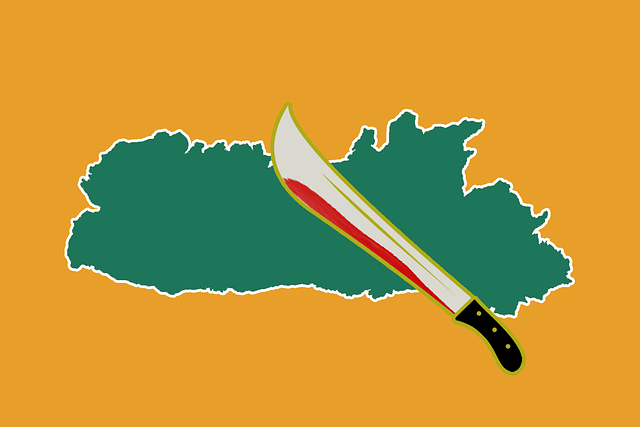
Explained: Why Meghalaya’s Current Spell Of Violence Is Due To Its Failure To Protect Non-Tribals In The State
Those blaming the CAA for the riots are giving incomplete, and hence, false information.
Meghalaya is no stranger to communal violence. For over four decades now, non-tribals, pejoratively referred to as dkhars, have been the victims of assaults, murders, rapes, arson and worse.
As a result, thousands of dhkars have been forced to leave the state, especially its sylvan capital Shillong. This silent and steady exodus triggered by xenophobia-induced attacks on non-tribals has been seldom written or spoken about.
The latest round of violence that has rocked the hill state since February 28 is, however, starkly different from the communal mayhems that had visited Meghalaya in the past.
This time, the violence has been triggered by the attack on functionaries of the influential Khasi Students’ Union (KSU), leading to the death of one Lurshai Hynniewta, a 35-year-old member of the outfit.
The incident occurred at Ichamati, a small town in Shella near the Indo-Bangladesh border. The KSU had held a meeting there On February 28 to create awareness against the Citizenship Amendment Act (CAA) and drum up support for the demand to introduce the Inner Line Permit (ILP) system for Meghalaya.
As has often been the case with such gatherings, some activists of the outfit allegedly attacked non-tribals and their properties at Ichamati. According to East Khasi Hills Superintendent of Police Claudia Lyngwa, a haystack was torched and attempts were made to set a house on fire.
Till now, non-tribals have cowered in fear and meekly tolerated such attacks. And emboldened by the widespread fear among the non-tribals, the attacks on them have continued.
But this time, the non-tribals retaliated. Scores of angry young men (non-tribals) armed with choppers and bamboo sticks hit back at the KSU activists and damaged a taxi that was being driven by Hynniewta, the slain KSU functionary.
The state then descended into a spiral of violence that has left two more persons (both non-tribals) dead and many non-tribals injured. Some parts of the state, including many areas of Shillong, are under curfew and under an internet blackout. Arson and attacks on non-tribals continue.
The primary question is: why did the non-tribals suddenly attack the KSU activists? What led to this unprecedented fightback?
The answer lies in the continuous attacks on non-tribals over the last 40 years since non-tribals came under attack for the first time in 1979. Since then, a large number of non-tribals have been murdered, maimed, womenfolk raped and killed, and properties destroyed.
Coupled with all this has been the overt and covert discrimination against non-tribals. This discrimination assumes many forms ranging from denial of employment opportunities and denial of right to livelihood to restrictions on taking properties on rent, leave alone owning them.
The recurrent attacks on and discrimination against dkhars has led to a steady exodus of thousands of non-tribal families from Meghalaya. Many of these families had resided in the state for generations.
Till date, not a single criminal responsible for attacking, maiming, killing, raping non-tribals or vandalising or looting their properties has been brought to justice and indicted of the heinous crimes.
This has emboldened a section of the tribals, a small but influential one, to perpetuate attacks on the dkhars. The state, or successive regimes in Meghalaya, have never prosecuted them, breeding this sense of impunity among the perpetrators of crimes against non-tribals.
Had the state government been firm in booking all those responsible for attacks on non-tribals right from 1979, things would not have come to such a pass. In fact, such attacks would have stopped a long time ago since the fear of the law would have prevailed.
Unfortunately, the present regime in the state is going down the same path once again. While eight non-tribals accused of carrying out attacks on the KSU functionaries on February 28 were promptly arrested the very next day, similar alacrity was completely missing when it came to tracing out and arresting those responsible for the continuing attacks on non-tribals.
In fact, abject attempts are being to justify, gloss over and even cover-up crimes against non-tribals. For instance, the East Khasi Hills police chief came up with a ludicrous statement following the murder of one Uphasuddin at Shella in the wee hours of Sunday.
The district police chief reasoned that since the murderers knew the house of the victim, the entrance to his house and where he was sleeping, the crime was a fallout of either personal enmity or business rivalry.
Chief Minister Conrad Sangma announced compensation of Rs two lakh for the family of slain KSU functionary Hynniewta, but has not done so in the case of the two other non-tribals killed.
Tribal bodies have condemned Hynniewta’s killing, but have been silent on the attacks on non-tribals. The Congress has diabolically linked the violence to CAA.
A proscribed terrorist outfit of Meghalaya--Hynniewtrep National Liberation Council (HNLC)--has issued a chilling ultimatum to non-tribals in Ichamati to leave the area within a month or be prepared for “mass bloodshed”.
Not only has no one condemned this ultimatum, the state government has not assured the non-tribals there of protection. Instead, the state authorities have only urged against publicising the ultimatum in the false premise that not publicising it would neutralise the threat.
At the end of the day, once revenge for the killing of Hynniewta has been extracted, life will get back to normal in Meghalaya. The ‘normal’ for the dhkars is, of course, living in constant fear of attacks, denial of Constitutionally guaranteed rights and life as second-class citizens.
That is, till the next bout of violence that will surely leave more (non-tribals) injured, maimed or killed, and more non-tribal properties destroyed. Triggering, thus, another small exodus of the unwanted dkhars from Meghalaya.